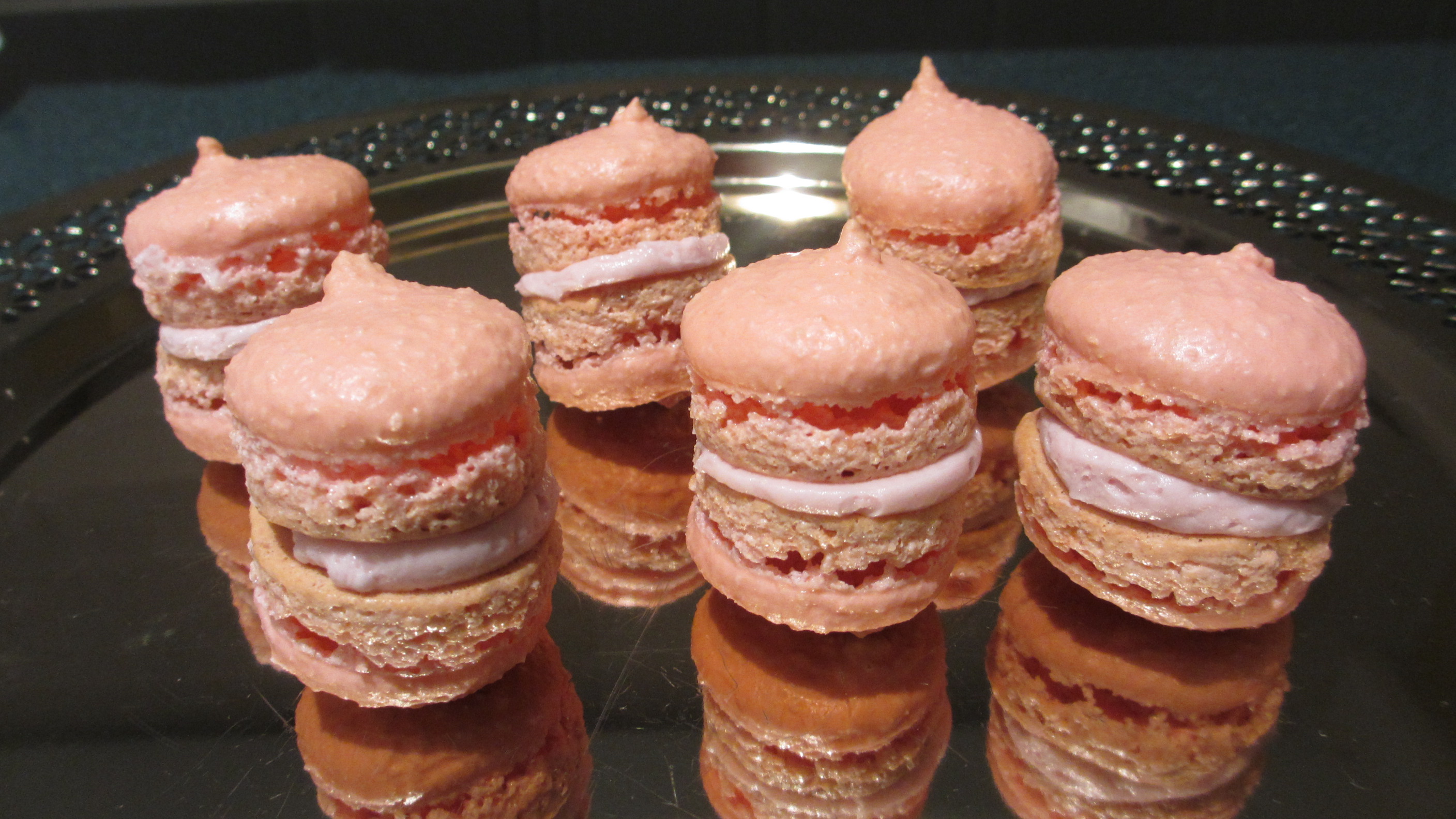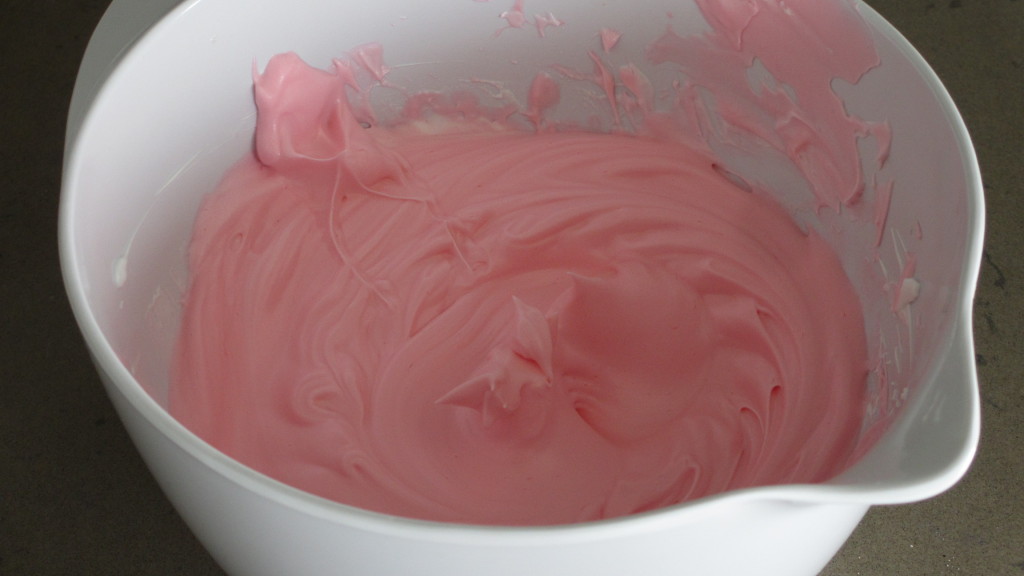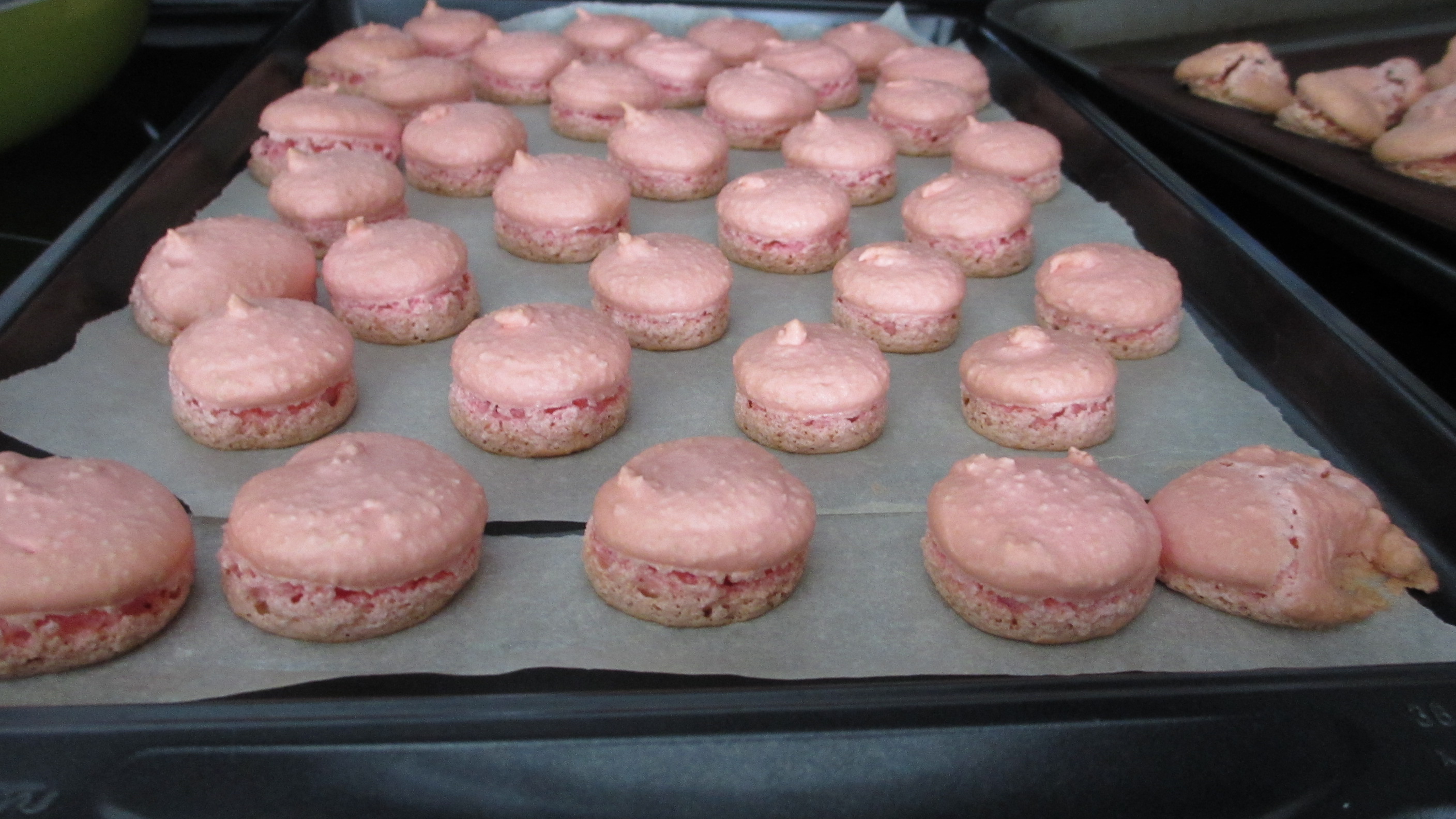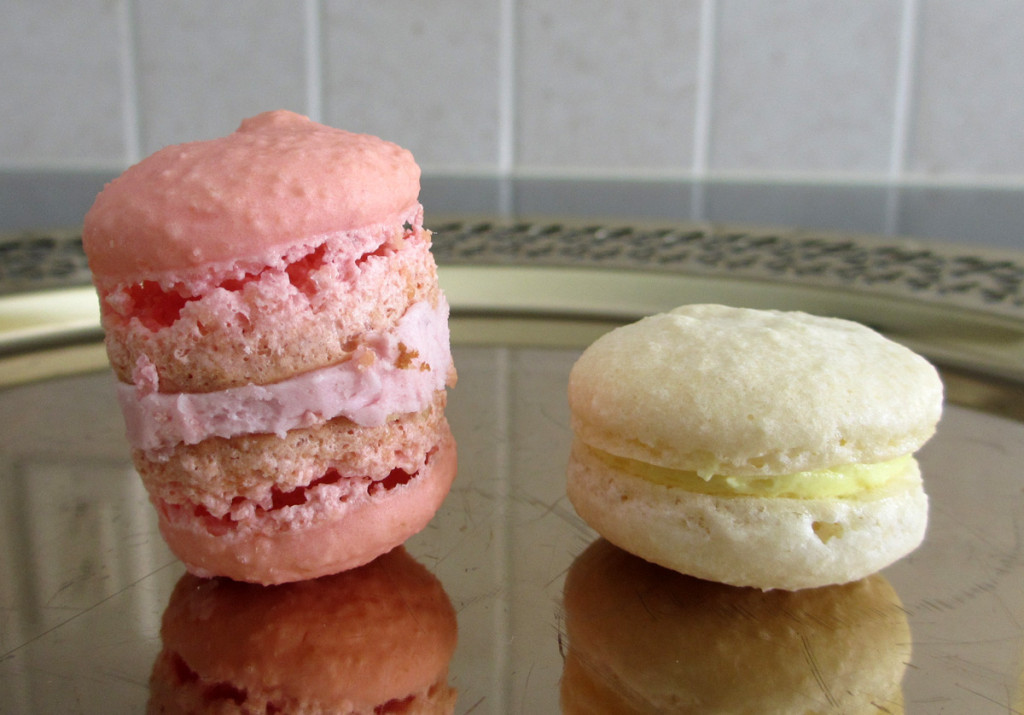About a month ago, I decided to try baking macarons. These treats are different than macaroons with coconut and chocolate, like my Reindeer Nose Macaroons or my Easter Bird Nest Macaroons. These are French macarons, which are made from almond flour and don’t have even an ounce of coconut in them. The one thing you need to know about French macarons before reading the rest of this post, is that they are difficult to make. Extremely difficult.
It’s no surprise that my first attempt at macarons was unfortunately unsuccessful. While the macarons certainly tasted quite delicious, they looked less than perfect. This post will examine exactly what I did, and why my macarons failed. Here is a sneak peak at some of the ones that turned out decently and were not complete fails:
After hearing about how finicky macarons can be, and heeding the warnings given to me, I decided to attempt them anyways. I watched a YouTube video that provided a few tips for successful macarons, made a trip to the grocery store to pick up my ingredients, and was ready to begin.
The first thing that can go wrong when baking macarons is that your egg whites are not beaten properly. They should hold stiff peaks when you are done beating them, before you add color or the other ingredients. Looks like I was doing everything right at the beginning, because my egg whites with pink color added were beaten until stiff.
The next step is to add in the almond flour and icing sugar mixture. The key is to fold the dry ingredients into the egg and not beat it, to keep it light and fluffy. You can’t over mix it, because it will lose its air bubbles and become runny, but at the same time you can’t under mix it, as the batter won’t expand sideways. Some recipes suggest mixing the batter in about 50-60 strokes, and some macaron chefs actually count the number of strokes they do when mixing the batter. The window is so small that there really is no room for error.
I think this was my first problem. I was so concerned about over mixing the batter that I hastily began piping my macaron shells before the batter reached a proper consistency. Now that I’ve done a bit more research, I’ve learned that if you pipe an entire row of macarons and the shells havent flattened out a little bit, you need to go back and mix the batter a little bit longer.
My second problem happened as a result of the way I piped my shells onto my pan. Since I’ve been doing a lot of cupcake baking recently, I have been working on my cupcake icing swirl technique. I used that same motion to pipe my macarons, so that they all had little peaks on them. This wouldn’t have posed too much of a problem if my batter was a little softer, but because it was still quite stiff the macaron shells held the peaked shapes and baked that way. Ready to see what these shells looked like? Brace yourselves, because it’s not pretty…
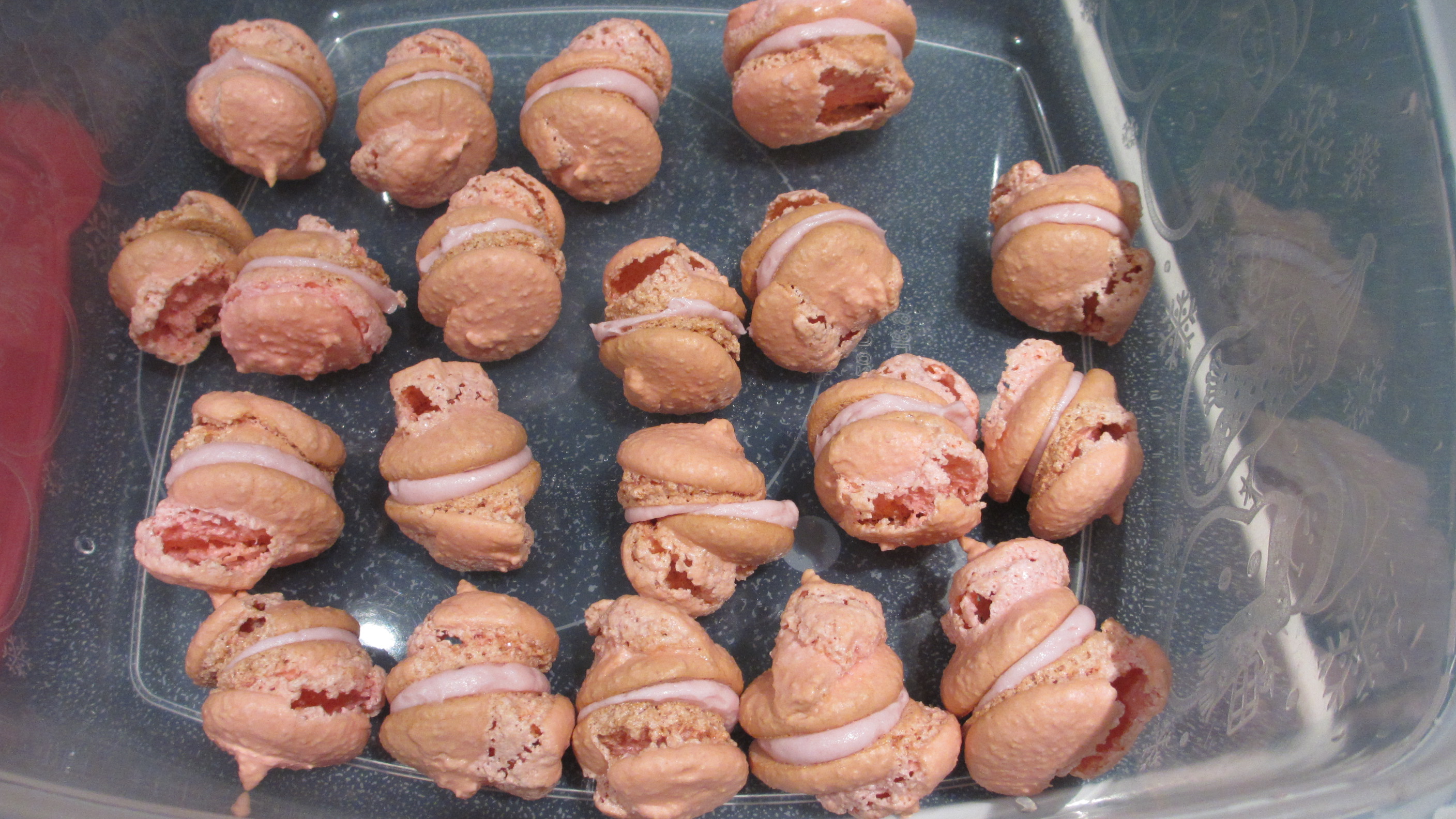 A better technique is to hold the piping bag or piping tool in one place, and squeeze it without moving it so that the batter expands sideways on its own. I used this technique with some of my macaron shells, and these are the ones that baked with fairly flat tops.
A better technique is to hold the piping bag or piping tool in one place, and squeeze it without moving it so that the batter expands sideways on its own. I used this technique with some of my macaron shells, and these are the ones that baked with fairly flat tops.
Although the tops are fairly flat (with the exception of a few small peaks that could have been smoothed out), the shells are slightly cracked on the sides, due to the fact that they rose upwards while baking. This made the insides quite hollow. I think that my oven temperature was set a little too high, and the shells were not dry enough. While I left them on the counter to dry for 20 minutes before baking, they probably should have been left out a little bit longer.
The one thing that turned out perfectly was my buttercream frosting. I added a little bit of blueberry jam for flavoring, and tinted it pink with food coloring. It added a bit of fruity flavor to the macarons and matched wonderfully!
I learned from my mistakes, however, and after a bit more research I tried baking macarons a second time. This time I made lemon macarons, and I think they turned out quite nicely! They aren’t quite perfect and I wasn’t able to acheive the “feet” that macaron chefs strive to obtain, but they look much more authentic. I thought that my first attempt tasted good, but after trying the second batch, I thought they tasted one hundred times better! The texture was softer but at the same time less fragile, and they weren’t sticky on the inside. Below you can see a comparison between my two batches of macarons.
Since I learned from my mistakes, I want you to learn from them as well, which is why I also created a blog post on the Do’s and Don’ts of Baking Macarons. Be sure to check it out for some helpful tips.
I want to wish you luck if you are baking macarons for the first time, or if you’ve failed before and are eager to try again. It’s okay to fail (people will still think they’re delicious!), and you’ll be able to do things differently the next time around. Even the best bakers make mistakes, and you’ll be able to laugh about them later on.
♥ Shnugglebunny

